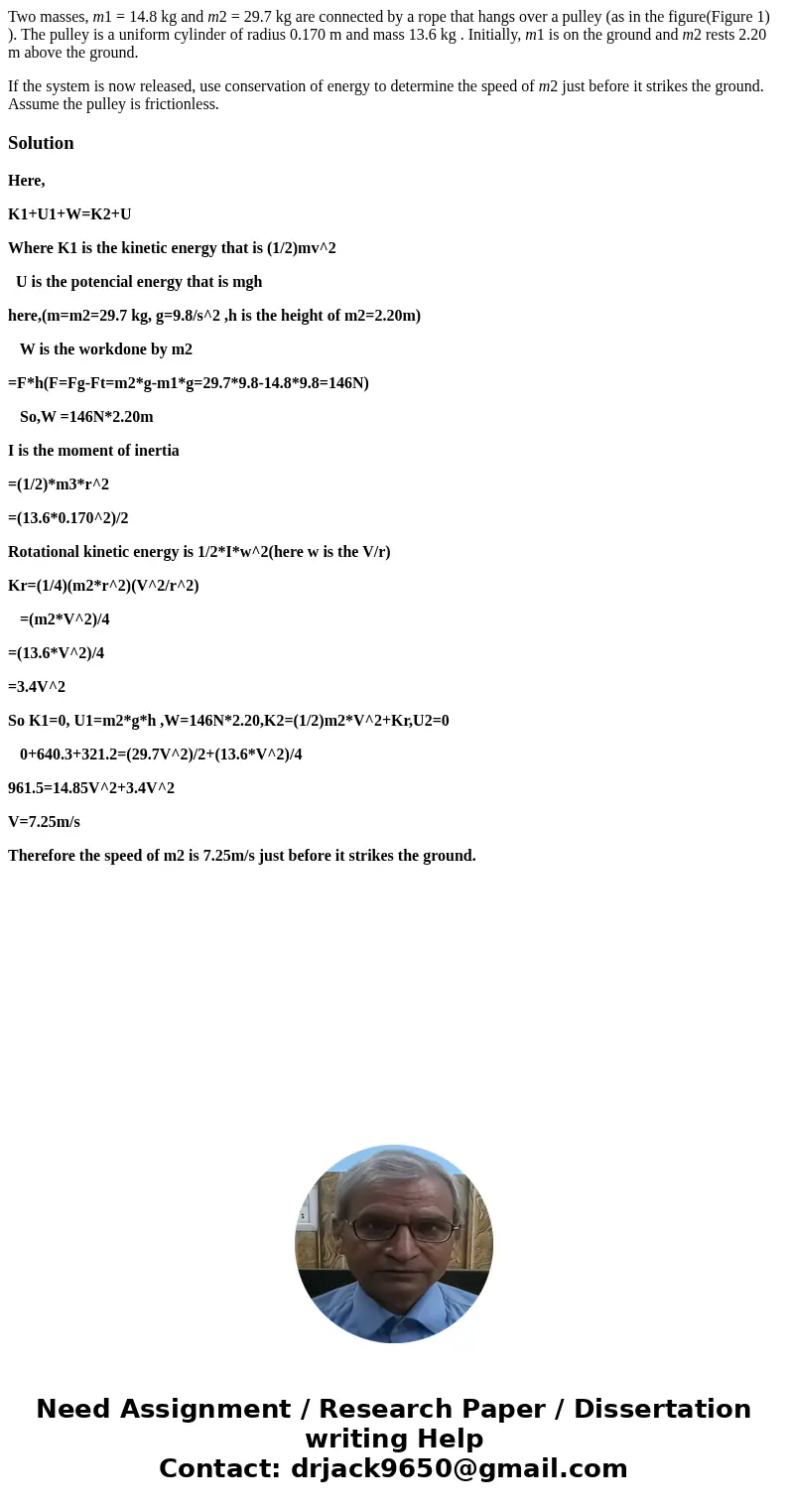Two masses m1 148 kg and m2 297 kg are connected by a rope
Two masses, m1 = 14.8 kg and m2 = 29.7 kg are connected by a rope that hangs over a pulley (as in the figure(Figure 1) ). The pulley is a uniform cylinder of radius 0.170 m and mass 13.6 kg . Initially, m1 is on the ground and m2 rests 2.20 m above the ground.
If the system is now released, use conservation of energy to determine the speed of m2 just before it strikes the ground. Assume the pulley is frictionless.
Solution
Here,
K1+U1+W=K2+U
Where K1 is the kinetic energy that is (1/2)mv^2
U is the potencial energy that is mgh
here,(m=m2=29.7 kg, g=9.8/s^2 ,h is the height of m2=2.20m)
W is the workdone by m2
=F*h(F=Fg-Ft=m2*g-m1*g=29.7*9.8-14.8*9.8=146N)
So,W =146N*2.20m
I is the moment of inertia
=(1/2)*m3*r^2
=(13.6*0.170^2)/2
Rotational kinetic energy is 1/2*I*w^2(here w is the V/r)
Kr=(1/4)(m2*r^2)(V^2/r^2)
=(m2*V^2)/4
=(13.6*V^2)/4
=3.4V^2
So K1=0, U1=m2*g*h ,W=146N*2.20,K2=(1/2)m2*V^2+Kr,U2=0
0+640.3+321.2=(29.7V^2)/2+(13.6*V^2)/4
961.5=14.85V^2+3.4V^2
V=7.25m/s
Therefore the speed of m2 is 7.25m/s just before it strikes the ground.

 Homework Sourse
Homework Sourse